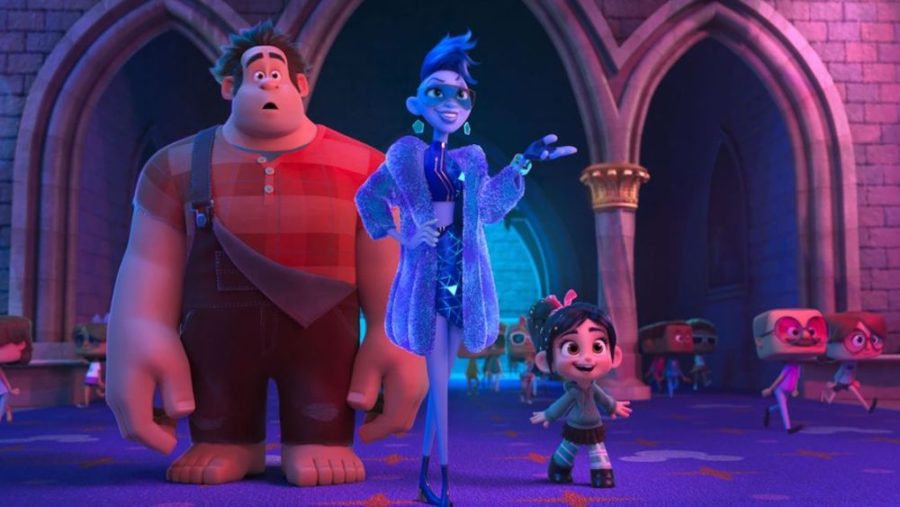What do Gal Gadot, Disney princesses, and eBay all have in common?
They’re all prime examples of how Disney uses pop culture icons to captivate the audience in its latest animated flick, “Ralph Breaks the Internet.”
While creating the widely anticipated sequel to “Wreck-it Ralph,” filmmakers capitalized on capitalism by using well-known brands of today, such as eBay and Google, to relate to and draw in interest from viewers. These references are featured throughout the film and are represented in ways that allow viewers to look at the web through new and more amusing perspectives.
The internet’s major industries make an appearance often, as the plot of “Ralph Breaks the Internet” follows Wreck-it Ralph and Vanellope von Schweetz, two video game characters, into the realms of the internet as they explore it in hopes of saving Vanellope’s game.
“Ralph Breaks the Internet” is chock-full of plot holes, and most of them are critical to the logic of the film. For example, Vanellope and Ralph are in the internet together for a mere 24 hours, but this time frame poses a major franchise inconsistency. The entire plot of “Wreck it Ralph” revolves around the fact that Ralph was missing from his game, and in “Ralph Breaks the Internet,” he wasn’t in his game either. The creators of the sequel merely gloss over this inconsistency with a simple line from Felix, who tells Ralph that he’ll cover for him.
However, the plot inconsistencies are understandable, as this wasn’t the type of movie where they were meant to matter.
Despite its difficulty maintaining a proper storyline, the movie did have some redeeming qualities.
The spoken jokes are relatively underwhelming, but that doesn’t mean this movie is unamusing. The visual humor is extremely well done, as I found myself uncontrollably giggling each time Gord, a silent and hilariously drawn character, popped up out of the blue.
The most entertaining part of the film, however, was the attention to detail. Disney is notorious for hiding Easter eggs (allusions to other movies) in its films, and “Ralph Breaks the Internet” was full of them. If one is trying hard enough to look for them, they will not be disappointed with the dozens of Disney references and cameos, such as Baby Groot from Guardians of the Galaxy, Star Wars storm troopers, and even a Stan Lee avatar, which was a heartwarming tribute to the late Marvel creator.
The most significant and anticipated cameo of the movie, however, was by Disney princesses. “Ralph Breaks the Internet” was the first film in history to feature all of Disney’s official princesses in one film together. To add to the magic, each of the princesses was voiced by their original voice actors, except for Aurora, Snow White, and Cinderella, whose original actors have died.
Frankly, I was probably more excited to see the princesses than I should have been, so you can imagine my disappointment when I discovered that the princesses had very minimal screen time, most of which was already shown in the previews. Nonetheless, the addition of the princesses was enjoyable, as audiences get to see them like never before.
The movie also Rick Rolls you. If you’re willing to sit through the several minutes of end credits, you’ll be rewarded with a hilarious version of the classic music video for “Never Gonna Give You Up”, featuring Ralph as Rick Astley as he covers the song.
The memes featured in this movie are plentiful and rather enjoyable, as there is a whole compilation of Ralph recreating some of the internet’s most popular fads, such as screaming goat videos or beauty tutorials. The humor is able to capitalize on today’s culture and give audiences what they want.
So, if you’re willing to look past the plot holes and focus on the jokes instead, then “Ralph Breaks the Internet” will prove entertaining and worthwhile. But for those who tend to overanalyze, try not to get hung up on the movie’s structure.


